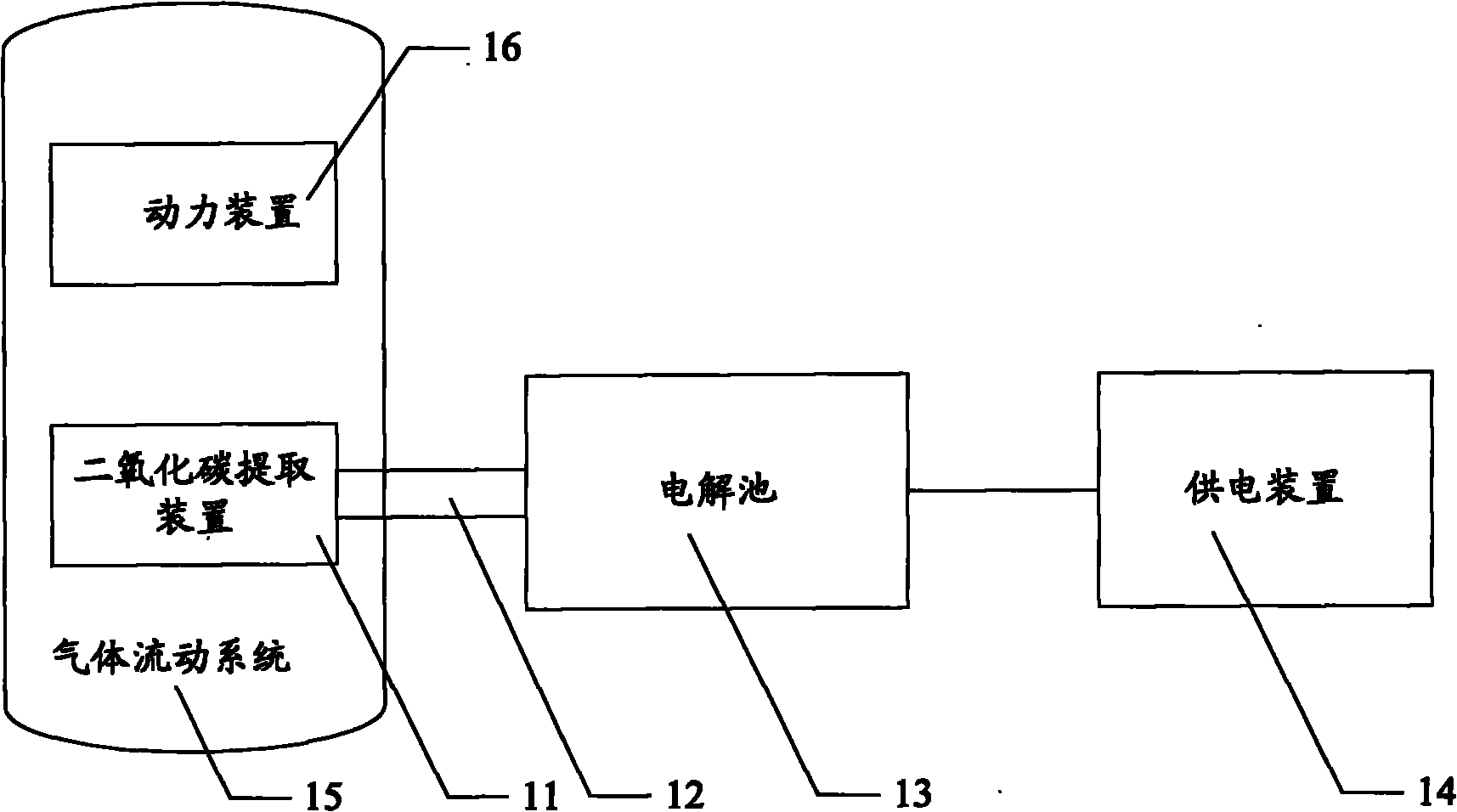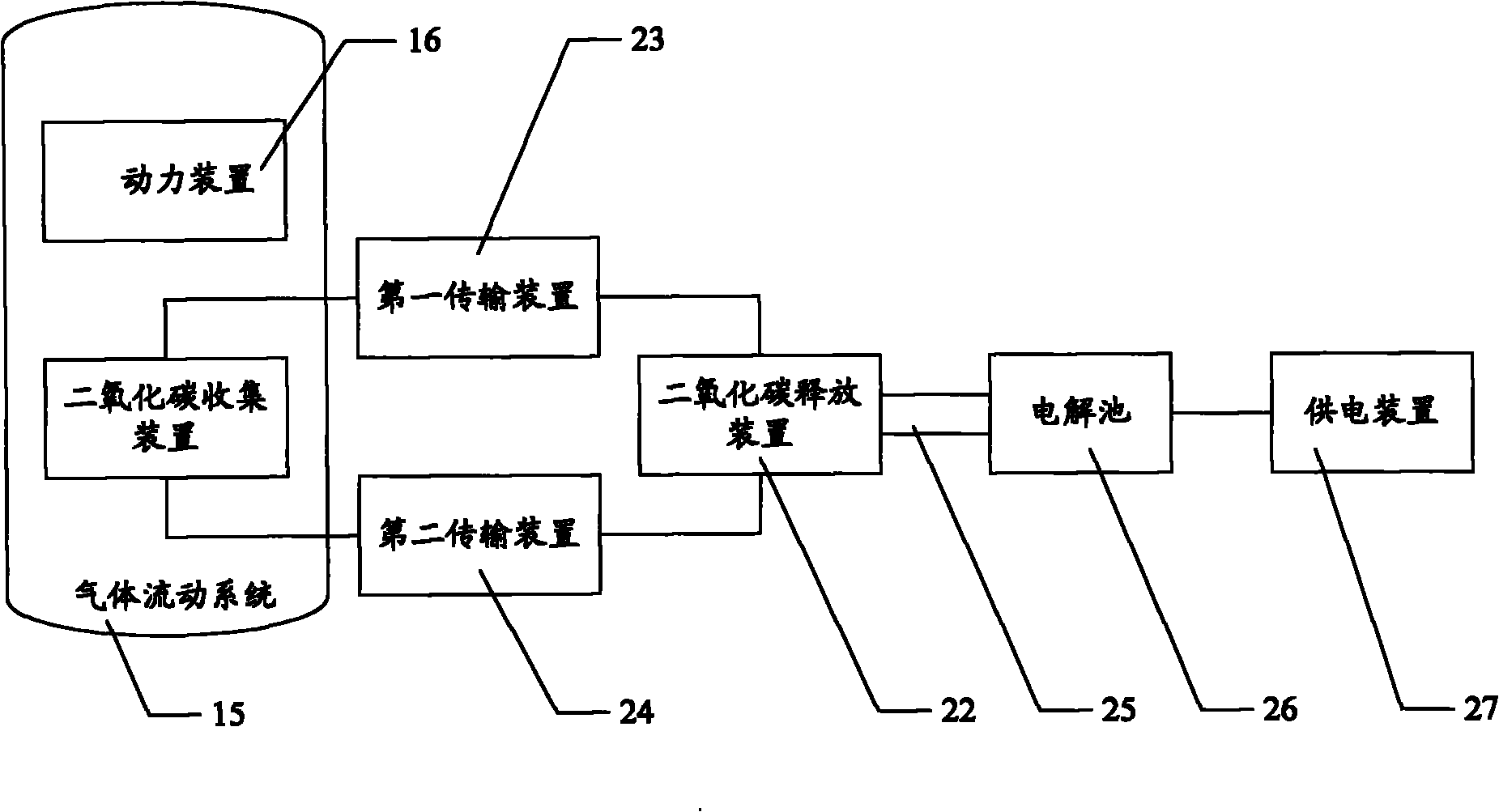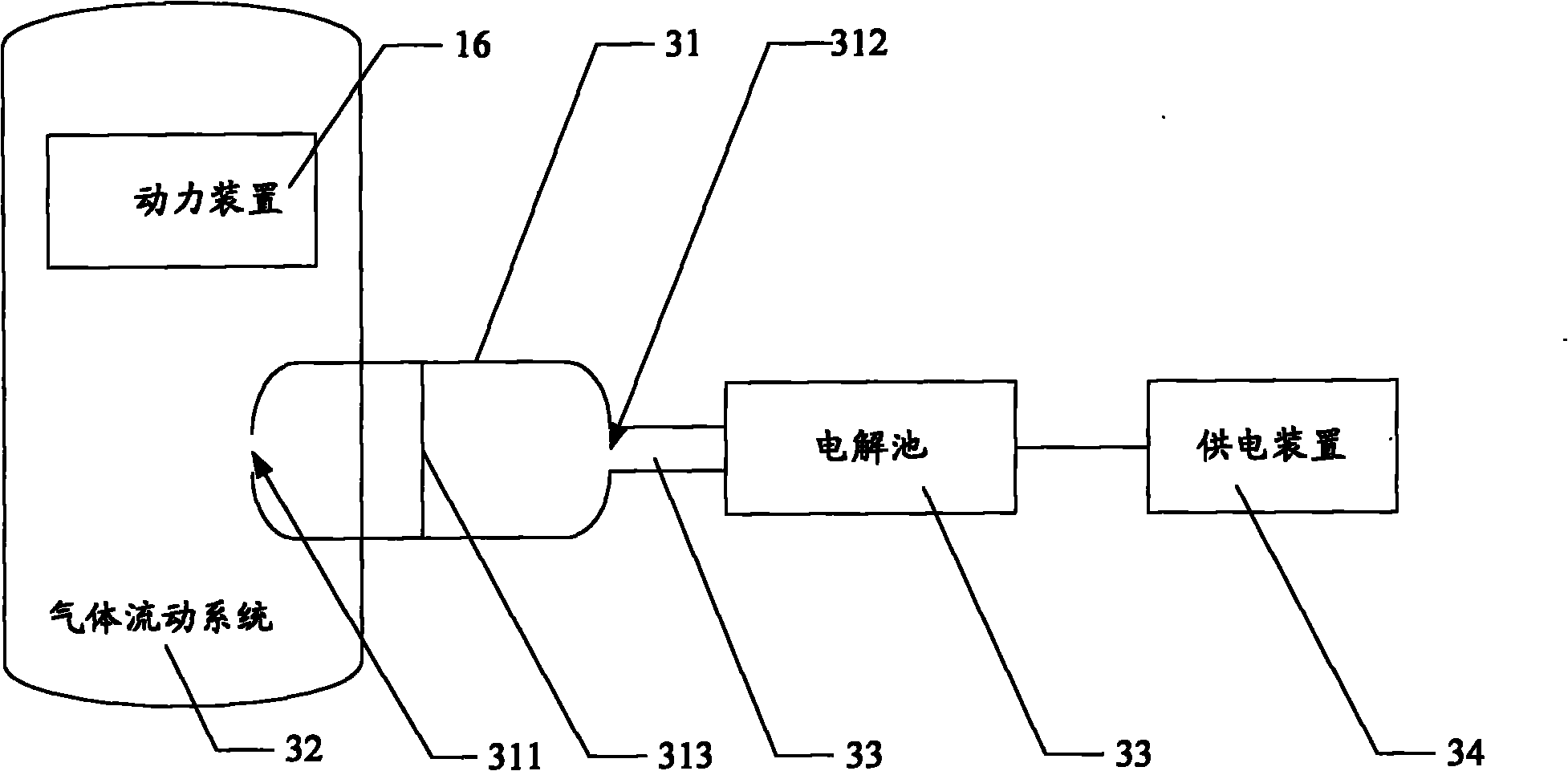Carbon dioxide concentration control system for closed capsule of manned spacecraft
A manned spacecraft and carbon dioxide technology, which is applied in the direction of the device for controlling the living conditions of space navigation vehicles, etc., can solve the problems such as the inability to launch a supply ship under the launch conditions, the inability to transport the adsorbent or the absorbent, and the inability to meet the requirements of concentration control.
- Summary
- Abstract
- Description
- Claims
- Application Information
AI Technical Summary
Problems solved by technology
Method used
Image
Examples
Embodiment 1
[0025] see figure 1 , figure 1 It is a structural schematic diagram of a carbon dioxide concentration control system in a closed cabin of a manned spacecraft disclosed in Embodiment 1 of the present invention.
[0026] The control system includes: a carbon dioxide extraction device 11 , a carbon dioxide transmission channel 12 , an electrolytic cell 13 and a power supply device 14 .
[0027] Wherein, the carbon dioxide extraction device 11 is arranged in the gas flow system 15 of the closed cabin, and the gas flow system 15, under the action of its power device 16, makes the gas in the closed cabin under no gravity or microgravity flow, and the carbon dioxide extraction device 11 is used to extract carbon dioxide in the gas flow system 15; the two ends of the carbon dioxide transmission channel 12 are respectively connected with the carbon dioxide extraction device 11 and the electrolytic cell 13; the carbon dioxide obtained by the carbon dioxide extraction device 11 can ente...
Embodiment 2
[0030] see figure 2 , figure 2 It is a structural schematic diagram of the carbon dioxide concentration control system in the airtight cabin of a manned spacecraft disclosed in Embodiment 2 of the present invention.
[0031] The control system includes: a carbon dioxide collection device 21 , a carbon dioxide release device 22 , a first transmission device 23 , a second transmission device 24 , a carbon dioxide transmission channel 25 , an electrolytic cell 26 and a power supply device 27 .
[0032] Wherein, the carbon dioxide collection device 21 is arranged in the gas flow system of the closed cabin, and a carbon dioxide adsorbent or absorbent is placed in the carbon dioxide collection device 21, which can absorb or absorb carbon dioxide in the gas flow system, and then adsorb the carbon dioxide adsorbent or The absorbent that has absorbed carbon dioxide is transported to the carbon dioxide release device 22 through the first transmission device 23, and the carbon dioxide...
Embodiment 3
[0040] see image 3 , image 3 It is a schematic structural diagram of the carbon dioxide extraction device disclosed in Embodiment 3 of the present invention.
[0041] The carbon dioxide extraction device is a cylinder structure, and the cylinder 31 has an air inlet 311 and an air outlet 312, wherein the air inlet 311 is located in the gas flow system 32 of the closed cabin, and the air outlet 312 is connected to one end of the carbon dioxide transmission channel 33, The other end of the carbon dioxide transmission channel 33 is connected to the electrolytic cell 34, and between the air inlet 311 and the gas outlet 312 of the cylinder 31, a polypropylene film or polyethylene film 313 that only allows carbon dioxide to pass through is provided, and the power supply device 35 is used for The electrolytic cell 34 supplies power.
[0042] After the gas in the gas flow system of the closed cabin enters the cylinder 31, since the polypropylene film or polyethylene film 313 that o...
PUM
 Login to View More
Login to View More Abstract
Description
Claims
Application Information
 Login to View More
Login to View More - R&D
- Intellectual Property
- Life Sciences
- Materials
- Tech Scout
- Unparalleled Data Quality
- Higher Quality Content
- 60% Fewer Hallucinations
Browse by: Latest US Patents, China's latest patents, Technical Efficacy Thesaurus, Application Domain, Technology Topic, Popular Technical Reports.
© 2025 PatSnap. All rights reserved.Legal|Privacy policy|Modern Slavery Act Transparency Statement|Sitemap|About US| Contact US: help@patsnap.com



